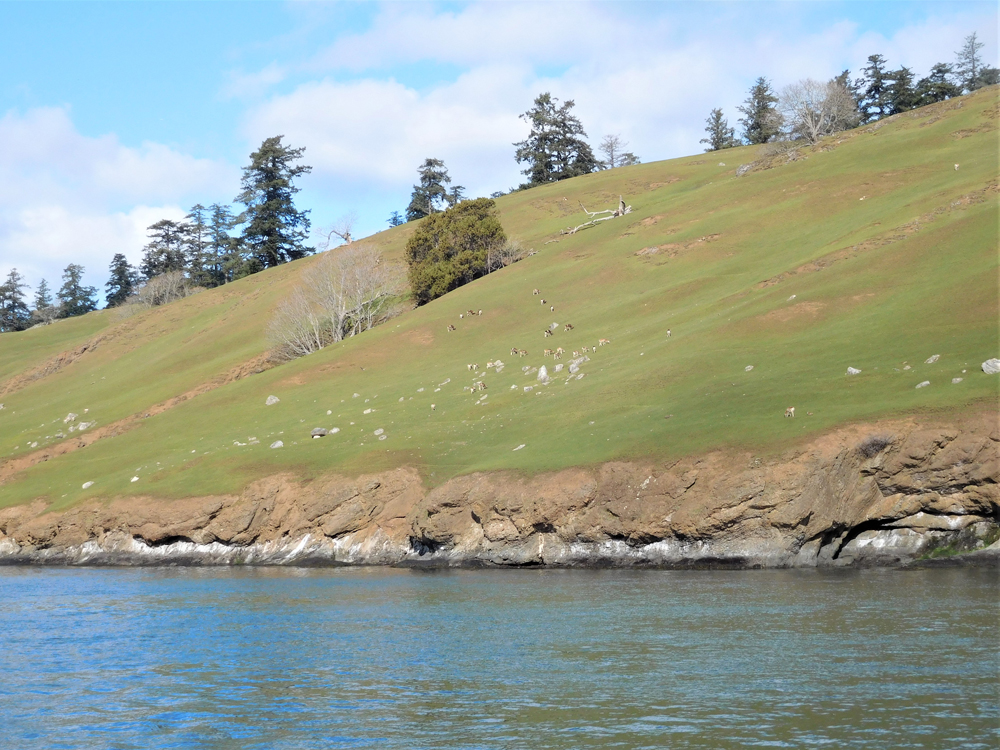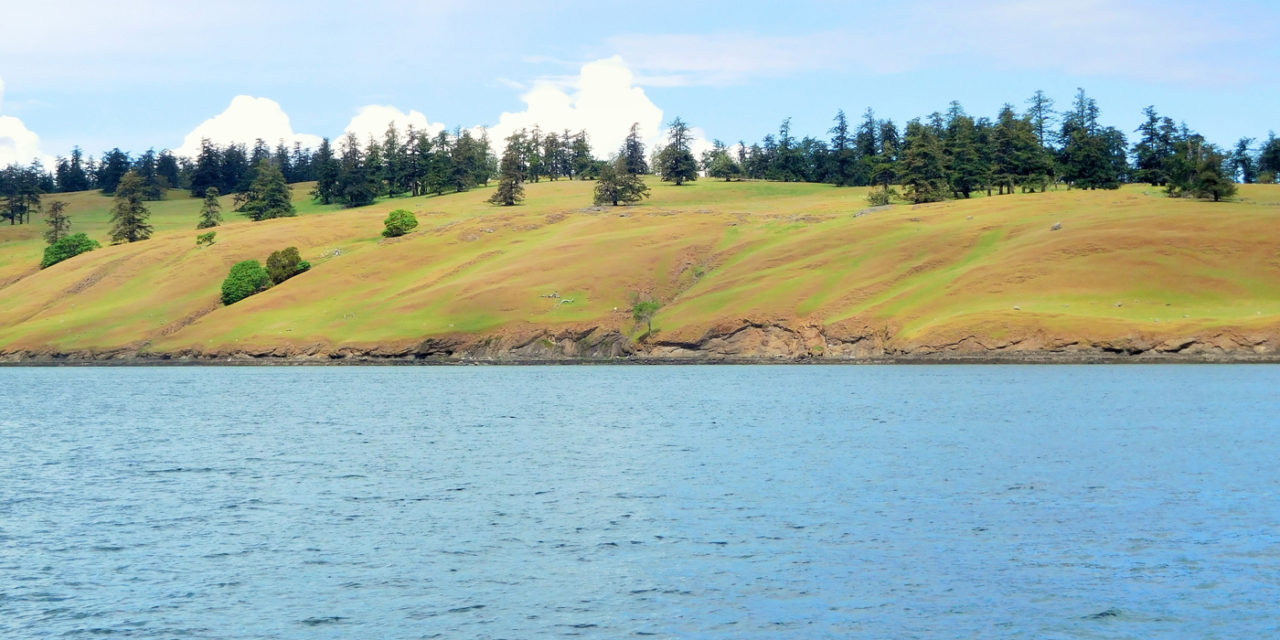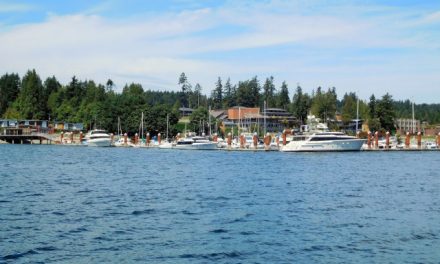Mention the name Spieden Island, and visions of the sea meeting steep grassy hillsides, dotted with large boulders left by glacier activity, come to mind. While the north side of this two-mile long island is forested, the south side has beautiful open fields, where Mouflon Sheep graze on short grasses, heather, and shrubs. Spieden Island is one of the most enchanting of the San Juan Islands and casts its spell upon the unwary. The 516-acre island is privately owned, and boaters may not go ashore anywhere on the island. But boaters can view the cliffsides as they motor past, and look for Mouflon and other rare animals like the European fallow deer and the Japanese sika deer. The Mouflon Sheep have been the most successful species on the island and are the most numerous.

Boaters will find several opportunities to observe these animals on Spieden Island. Mouflon Sheep mate (go through a rut), called rutting season in late autumn to early winter. The battle for access to groups of females consists of males headbutting each other in the flanks, sometimes locking horns to start the fight anew. Fighting among males is most common during rutting season, but they do fight year-round. October is a good month, weather permitting, to watch the males compete for dominance along the shores of Spieden Island. Males and females normally live in separate groups and only range together during mating season.


March and April are birthing months. The females (Ewes) give birth to either one lamb, or twin lambs, which suckle up to six months. Surprisingly, lambs are on their feet within minutes after birth. Mouflon form small groups or herds outside the rutting season, and the oldest female acts as leader of the herd. These herds are seen along the south side of the island in early spring. When motoring along Spieden Island, take care not to disturb these animals. Ewe warning calls and nervous stomping of the front feet means you’re too close.

The Mouflon is thought to be one of two original ancestors of modern-day sheep. They originated on the islands of Corsica, Sardinia, and Cyprus. Numbers there have fallen due to habitat loss, hunting, and interbreeding with domestic sheep; however, Mouflon herds were introduced on the European mainland and continue to thrive. A mouflon is about the size of a medium sheep with a weight range of 55 to 120 pounds. They have a rough coat, and grow a woolly under coat during the winter. Both males and females have horns, but those of the males are much larger. The curved, spiral horns arch over the head, but don’t flare out at the end like most wild sheep.
So how did Mouflon come to be on Spieden Island? It was 1969 when The Spieden Development Corporation purchased the island as a project to create “Safari Island,” a game farm, resort, and shooting preserve. The island was stocked with 2,100 game birds and hundreds of rare animals. The venture was short-lived, however, due to environmental concerns and the risk of errant bullets threatening nearby populated areas. Local discontent reached the national level when CBS Evening News, anchored by Walter Cronkite, reported the story, including the claim that the trophy hunting was falsely portrayed. Thus, began the end of “Safari Island.” In 1996, James Jannard, founder and major owner of Oakley Sunglasses and founder of RED Digital Cinema cameras, purchased the islandwhich he still owns and maintains as a private wildlife sanctuary

Spieden Island’s earlier history is equally fascinating. Around 1878, Robert Smith, a former British soldier, who had been stationed at San Juan British Camp, homesteaded on Spieden Island with his Native wife, Lucy. Their daughter Mary, later grown, met Edward Chevalier, who worked at the McMillan Lime Works on San Juan Island; they were married in 1894 and lived on Spieden Island until the early 1940s, raising a family of five children. Anthony (Tony) Sulak purchased the island in 1943, who is said to have been an inventor and big game hunter. Before the current owner, James Jannard, purchased the property, an Alaska Airlines subsidiary company owned the island in the 1970s as an investment property.
Spieden Island has a long, colorful history, and the missing pieces leave us with an incomplete story; as a result, the island continues to cast its spell upon us, and only our imaginations can fill in the blanks of its once rich past






